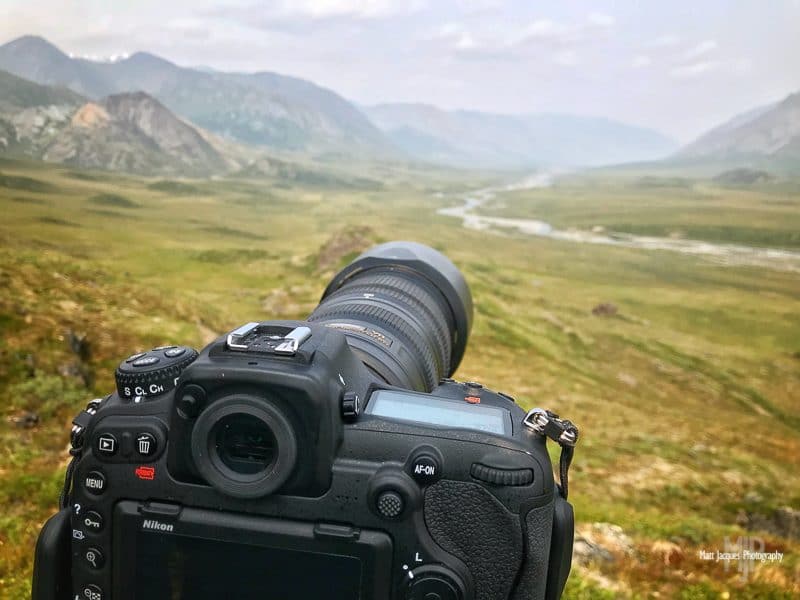
Back in 2016, when considering an upgrade to my trusty Nikon D700, I pondered the options available to me and quickly realized there was no true successor to that camera which served me so well on a wide range of assignments. I was torn between the amazing full-frame resolution and dynamic range of the D810 and the crop-sensor speed demon D500.
Ultimately, I went with the D810 as I had started shooting more landscapes and still subjects, and felt uneasy about taking a step ‘backward’ to a DX body. I’ve had zero regrets about the spectacular D810, but as a big trip into Alaska’s Arctic National Wildlife Refuge this summer began to take shape, I had another opportunity to test out and re-consider the Nikon D500.
Since its release, the camera has received high praise from reviewers, and it was supposed to pair nicely with Nikon’s AF-S Nikkor 200-500mm f/5.6E ED VR, a lens that had already earned a place in my pack for the trip because of its light weight and reach. Since I would need to take a second body with me on the trip either way, this seemed like a prime opportunity to see what all the hype was about and get a taste of the Nikon’s current DX world.
By the way, you might also want to check out my previous Nikkor 200-500mm f/5.6 review.
Logically, the D500 made plenty of sense to keep my long lens bolted to, but did I really need 10fps versus the 7fps possible with the grip in the D810? Would I miss the high resolution and virtually limitless ability to crop in post?
I made sure to familiarize myself with the D500 on a few test shoots before the big trip, and was impressed rather quickly. The somewhat smaller body and lighter weight of the camera only amplified the perks of shooting with the nimble 200-500mm. That lens was already hand-holdable on my D810, but it induced significantly less fatigue when paired with the D500. I noticed and enjoyed the little things that don’t improve image quality, but add to the overall experience with a camera – like the flip-out screen, touch-enabled menus (although, somewhat frustratingly, not *all* menus), and bluetooth/wifi connectivity via SnapBridge.
When it came to shooting, the D500 and 200-500mm combo acquired and maintained focus on wildlife subjects big and small very well in most continuous autofocus modes – although I had few opportunities to really assess the 3D tracking. One immediate advantage over my D810 was the dramatically better distribution of the autofocus points across the frame. Since the 153 focus-point AF system is identical to that which is in the D5, but the sensor is that much smaller than the D5’s, the AF points cover a much larger proportion of the frame. This made it much easier to place the wildlife where I’d like them in the frame, and hold focus rather than focusing and recomposing over and over. How many shots have I missed while distracted by recomposing an image in the past? Probably quite a few!
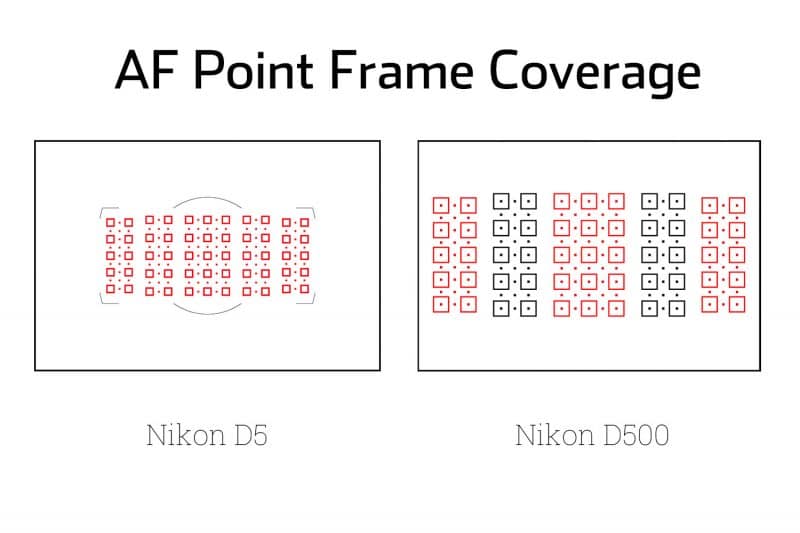
On my D810, I’ve had some issues with using teleconverters with this particular lens, but the TC-14E III 1.4x teleconverter worked well in most cases. The ability to slap a teleconverter on this camera/lens combination makes for some truly otherworldly reach. I found myself doing some quick math in the field when chatting with other photographers. Shooting with the D500 and its built-in 1.5x crop factor turns the 200-500mm into a field-of-view-equivalent 300-750mm. The TC-14E III ramps that up all the way to a whopping 420-1050mm.
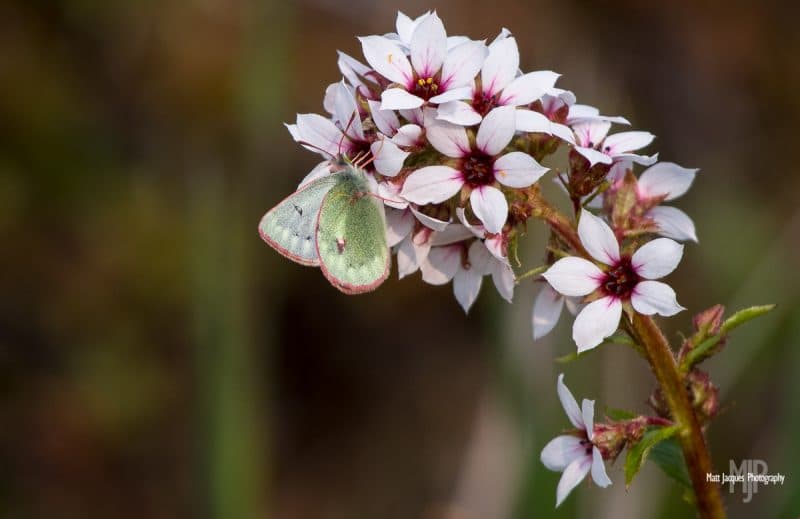
Since the 200-500mm has such an incredible minimum focus distance to begin with (just 2.2m or 7.22ft), impressive magnification that borders on macrophotography is possible with close subjects. This brings up one of my persistent issues with the 200-500mm. It is absolutely stellar and sharp, even wide open, at close and medium subject distances – but maintaining sharpness at or near infinity focus has been somewhat of an issue.
Of course, infinity focus at 750mm or 1050mm involves compressing a lot of distance into a very narrow field of view, so haze and other atmospheric conditions like heat shimmer come into play. I encountered this in the Arctic Refuge, where we watched the Porcupine caribou herd as they began the longest land migration of any mammal. We were not lucky enough to see the herd particularly up close, but thanks to the ridiculous reach of the D500 and 200-500mm pairing, composing a decent shot from afar was manageable. However, shooting wide open at f/8 (with the TC-14E III), I was getting more soft images than sharp. Things were generally better with the 200-500mm alone, but it’s one area that I’m not perfectly satisfied with, even after Nikon gave my lens a look over and thumbs-up.
Otherwise this combination has been an absolute joy to shoot with. 10fps has come in handy in many situations already, and in those cases it was a revelation to be able to just sit on the shutter button without the camera’s buffer getting anywhere near bogged down. I’ve also taken advantage of the Auto-ISO setting, and have walked away with twilight shots of wildlife taken at ISO 25,600 that I simply would have missed otherwise. Sure, the resulting image quality is not perfect, but when you’re in a once-in-a-lifetime place like the Arctic Refuge or staring at a species you may never see again, it’s an awesome feeling to get the shot despite sub-par conditions.


Despite giving up over 15MP to the D810, at 20.9MP I haven’t been disappointed in the resolution or image quality at all. I can still crop images if necessary, while maintaining respectable image dimensions for printing. While the D500 has more densely-packed pixels than my D810, it still has outstanding dynamic range and performs admirably at high ISOs.
That image quality potential is really unleashed by the camera’s industry-leading autofocus which uses the same engine as Nikon’s flagship D5, just-right ergonomics and a lightning-quick data pipeline that does everything to ensure there are no barriers to capturing the image you want when the situation presents itself. Although I have some reservations about use with a teleconverter, the 200-500mm really is a perfect match for the D500.
Sure, some of Nikon’s exotic primes might be able to deliver even quicker autofocus and flawless sharpness, but I would not want to be hiking through the Arctic tundra with one for very long. As it worked out, I was absolutely spoiled by having this lightweight, long-reach combo in my pack on this trip. Both the D500 and 200-500mm really excel at getting out of the way, making less to worry about and exhaust you when you’re venturing long distances or hunkered down on the edge of a marsh for hours at a time.
Overall, I’m extremely happy with this pairing and can’t imagine much surpassing it. For the combined price of a D500 and a 200-500mm f/5.6, about $3200, it’s the best way to get into serious wildlife photography that I can think of. It has completely removed almost every excuse I had before for missing the shot in the field, and made it easier just to pick up and go whenever an opportunity or inspiration presents itself. Whilst I had originally intended to just borrow the D500 from our friends at B&H Photo to test out on this trip to the Arctic, I ended up buying one!




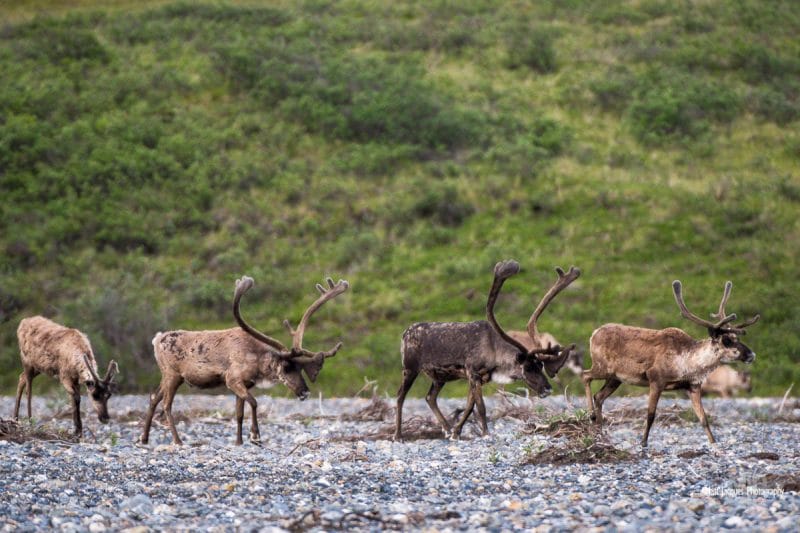


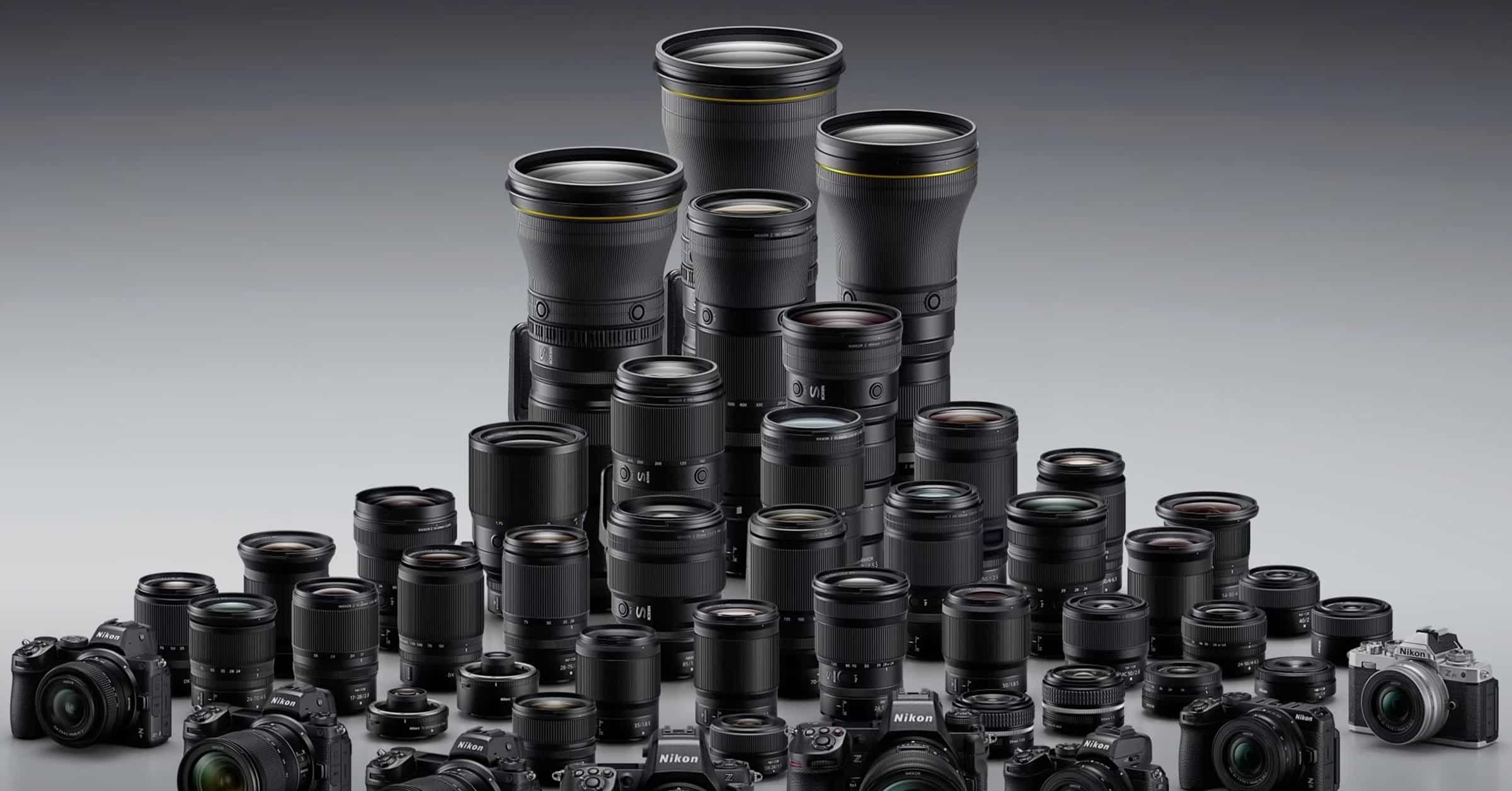

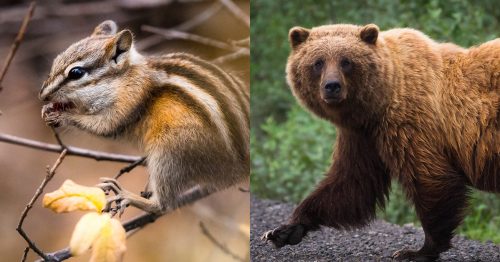

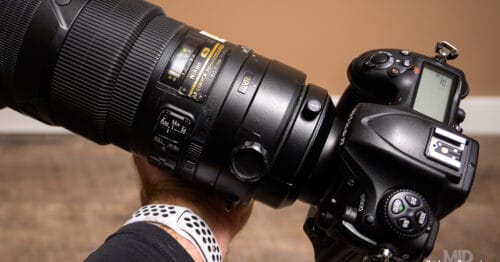
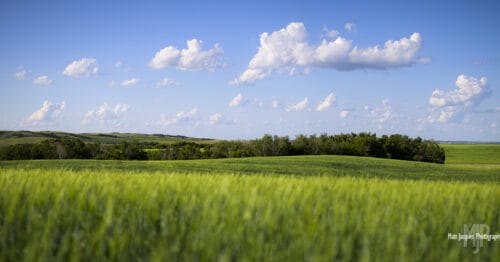
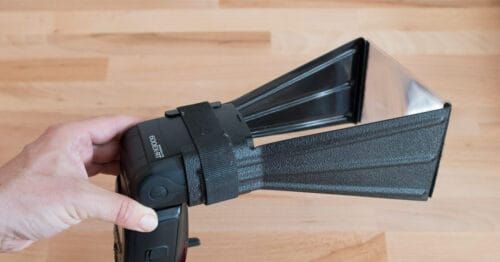
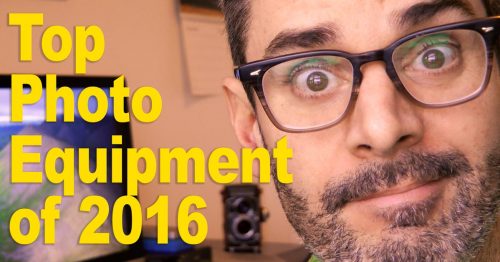
After lugging along a D810 with a 500mm on safari in Tanzania i switched to the 200-500mm with the D500 on my next two safari’s. The versatility for birding is exceptional with this combo. The 500mm will kill you after holding it upright for a few minutes and it takes a great deal of skill to effectively track with it. Primes are great but if you are worn out you won’t get the shot as you get less stable over time. I also found that the 500mm had a tendency to have similar perspectives to many of my images where the 200-500 zoom options gave a greater range of compositions. This was important when action was happening and you can instantly recompose. I ended up pairing this combo with the D810 and 70-200 and those two were just about all I needed for two weeks in the wild.
The vast majority of photographers do not make their living making large prints so the slight quality difference between the 500 or 600 prime and the 200-500 I don’t believe is really that important. If you have good techniques then you will get good results from the 200-500.
Hey Charles – couldn’t agree more. While I don’t have a 500mm, I’ve shot with one before and can’t imagine moving around much with it. Will be interesting to see how the expected 500mm f/5.6 PF turns out. For what it’s worth, the kit you described is pretty much exactly what I took up into the Refuge. D500 with 200-500, D810 with 70-200 plus 16-35 f/4 for wide angles/landscapes (much lighter and smaller than the 14-24, and every gram counted on this trip).
Extremely interesting review. Thanks.
Sadly, there is no such pairing available for Canon shooters. I‘d imagine that a 200-500 lens on an EOS 7D could be very attractive for a bunch of Canon users. I would certainly be such a guy.
Thanks, Urs! For sure, the Canon lineup could benefit from a 200-500mm… it’s such an interesting proposition from a focal length standpoint, as well light weight and value. Still amazed how Nikon hit the price point they did with it.
LOL – it’s interesting to see the comments, assessments, problems and solutions from experienced pros. Then think back on the chatter from the wannabe’s in the background, with their affliction of GAS, talking about what you “really need”.
This solution is kinda cute – I already have a supply of SD cards (not XQS), and my D7200 has dual slots of course – as well as 95mm filters – the D500 has other attractions (at a price – YIKES, it costs more than the lens!). And the reach is way more than anything I’ve got at the moment.
So for around AUD$2,400 or USD$1,750 (to include the TC-14E III converter) I’d be up & running, and able to get into areas of photography I’ve never been able to, before.
This stuff’s all practical. I may not end up with gear that makes GAS heads’ eyes water. But at least I’ll be able to do what I want. Many thanks to you, Matt, for sharing this with me – and to Shutter Muse for publishing it.
PS – that’s on the basis of plugging the lens into my D7200 – I can reconsider the D500 later. BTW, I don’t regard that much “noise” as an issue – it’s much the same as the grain I’ve been used to throughout my life, with analogue photography. And not at all unpleasant, in any of your shots.
Hey Jean Pierre… for sure, the 7200 would be another great option to pair up with the 200-500mm. You’d still have ridiculous reach, even a bit more cropping flexibility than the D500 with the somewhat higher resolution… and only really be lacking a bit of fps and autofocus with fast-moving subjects. I’m definitely a fan of squeezing the most out of the gear you’ve got, and what you’ve got isn’t bad at all!
Update – I did get the D500 – the D7200 and some other gear helped pay for it! – and I’ve been pairing it with some lenses that are slightly more modest, others that are WAY out there.
For pet photography I’m using the 18-140 that came with the D7200. Works fine, for that. Dan is right about sharpness, but he does concede that you CAN recover a lot of lost ground and end up in much the same place, in post. I think there must be a proviso in there about the size of your prints, but certainly it’s “good enough”, for pets.
For birds, I’ve rather taken to the 70-200 – which of course is a 105-300 (roughly) on my D500, and barking at your heels. Especially with a TC, like the 1.4. This set up also fires me up when I watch the kite surfers – or the traditional ones, for that matter. I live half a mile from the Indian Ocean, and I HAVE to spend time there, taking shots of the marine world next door to me.
And for some crazy way out stuff I’m playing with, SIGMA’s 150-600 sport, a 2xTC and the D500, giving me a blazing 1800mm lens for super telephoto stuff. Not wild life, at this stage – maybe later.
Thanks, dear for sharing such beautiful information with us But here I have a very quick question how we can realize our Nikon D500 Review? Hope soon you will write a detailed article
Best Regards
What do you mean, “realize”?
I am going to be purchasing this combo to photograph wild horses in May next year. This review cemented my choice. Thanks !
Sounds like a fun trip! Where are the horses?
Great review and very useful article in a fantastic website. I will soon be residing within driving distance of a major game reserve in Africa, so I have been thinking about my gear. I already own a D500 and a Tamron 150-600mm G2, but have been thinking of switching the lens to the Nikon 200-500. I have been wondering about whether my “second” body should be a 810/850 or Z7 with a 70-200mm.
currently now i am using d7200 with nikon 200 – 500 mm lens, is good to switch to sony a7m3 vs nikon z6, my genre mainly wildlife and birds photography
No, I don’t think so. With the Sony A7m3 you are limited to using the G-Master 100-400, but then you’ll only have a 400mm reach which is not nearly good enough for bird photography. Currently you have a 500mm lens on a crop body, which gives you the field of view of a 750mm lens! This means if you went to Sony and used the 100-400, the birds would nearly be half the size in your images. Not a good idea. Why don’t you get a D500? It has better AF than the Z6 and you keep your crop factor which is so good for birds.
The FE 100-400mm does very well with Sony’s 1.4 TC and not bad with the 2x TC if you have good light and plenty of pixels on the subject. The FE 400 even more so.
Thanks for your thoughts, Ziggy!
In case of bird photography (mainly small birds) we still have to crop even after using 750mm (any APSC + 200-500mm combo). So, going for full frame will be a bad idea unless you plan for a fast prime (at least 500mm f4 + TC).
D7200 + 200-500 is highest ‘value for money’ option for bird photography (I used it for 2 years). If you really want to upgrade then go for D500 (like me) for more auto focus performance (group AF for BIF), larger viewfinder (better tracking), double frame rate (more action moment), better ergonomics, slightly better high ISO performance etc. etc.
Tips – Buy a D500 with 16-80mm kit lens (much cheaper than buying same grade of lens separately), then use the D500 + 200-500mm for birding, and D7200 + 16-80mm for everything else (mammals, landscape, habitat shot etc.). It is always wise to keep two bodies in the fields (in one of my trip D7200 mirror was suddenly locked halfway, somehow I managed to get it in right position but it refused to focus anything on my 200-500mm, luckily it was my last evening of the trip, later I had to send it for repair. Anyway I learnt a good lesson from this incident)
great to read this review. I’m off to the Canadian Rockies later this year and I’m using this 200-500 beauty with my D750.
I’m curious to know what BAG you used? Im dreadful…tried all sorts but never satisfied LOL
Hey Patrick! Sounds like a great trip you have lined up. With the lens hood reversed, the 200-500 fits just fine in the centre section of my older Tenba Shootout medium (24L size I *think*). Also fits in my older Tamrac Velocity 9x bag, though barely. I definitely need to step up my bag situation, but thankfully not having too many issues with the 200-500. The size/weight does mean having to make some compromises on the other lenses you decide to bring etc, but for the reach it gives you, really hard to find fault.
thanks Matt! Ive a Lowepro 450AW which it fits – but like lousy, it needs to be organised.
Another topic: I did think about the TC2 (2x teleconverter) – but in fact its no go the 3 Nikon make allow the auto-focus to work. Some really, but the reach even without is pretty impressive!
** but like you say *** autocorrection !!
The big Kinesis holster, also the big Thinktank one too I think.
Yes the big new Think Tank one is great!–>> https://www.thinktankphoto.com/collections/shoulder-bags-digital-holsters/products/digital-holster-150?rfsn=140348.1cb649